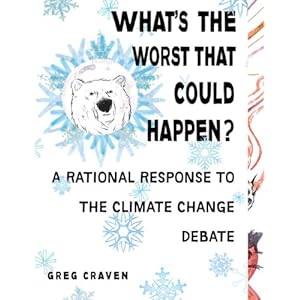Climate change is perhaps the most important issue in our curricula, though its place within the curriculum is small. Our students and people more generally commonly hold misconceptions about climate and climate change that are difficult to dispel. How can we be more effective in building our students' understandings of climate change and its implications?
Would you like to talk about these issues with your colleagues, working together to share approaches in a group with access to peer-reviewed resources?
Climate change and its effects aren't limited to science, so this group isn't limited to science teachers.
I am leading Lifelines for High School Climate Change Education for Western NY (I telecommute to Ithaca from Amherst). There are groups doing this around the country, and I can connect you to those groups. There isn't yet a single website listing the different programs. As the meetings are virtual, you don't actually need to be in the geographic region for the group, though there are advantages to being connected to other educators in your region.
Here are the details:
Lifelines for High School Climate Change Education (LHSCCE) is a project to establish professional learning communities (PLCs) to share curriculum resources and best practices for teaching about climate change in grades 9–12. The PLCs meet either in-person or via telecon/webinar (tele-meetings), depending on local preferences, but in light of desire to reduce greenhouse gas emissions, tele-meetings are encouraged. This is a NASA-funded project organized by the Lawrence Hall of Science (LHS) at the University of California, Berkeley.
The program will fund 20 PLC groups across the United States. Each PLC group will have a maximum of 15 members who will work together as a professional learning community over a period of two years. Each PLC will have a leader who will facilitate and coordinate the group’s online sharing activities. Teachers participating in a PLC will receive $100 each year.
Our group will meet on the first Monday of the month at 7:00 pm EST, beginning December 6, 2010.
PLC’s are open to high school teachers teaching in any subject area who wish to collaborate resources to incorporate climate change into their curriculum.
PLC’s are generally geographically located around the home-base of each PLC’s Leader. However, location does not restrict which group a teacher may wish to apply to join.
The program will fund 20 PLC groups across the United States. Each PLC group will have a maximum of 15 members who will work together as a professional learning community over a period of two years. Each PLC will have a leader who will facilitate and coordinate the group’s online sharing activities. Teachers participating in a PLC will receive $100 each year.
Our group will meet on the first Monday of the month at 7:00 pm EST, beginning December 6, 2010.
PLC’s are open to high school teachers teaching in any subject area who wish to collaborate resources to incorporate climate change into their curriculum.
PLC’s are generally geographically located around the home-base of each PLC’s Leader. However, location does not restrict which group a teacher may wish to apply to join.
If interested in applying to join the Western New York State group under the leadership of Don Duggan-Haas click on the link below to apply online:


